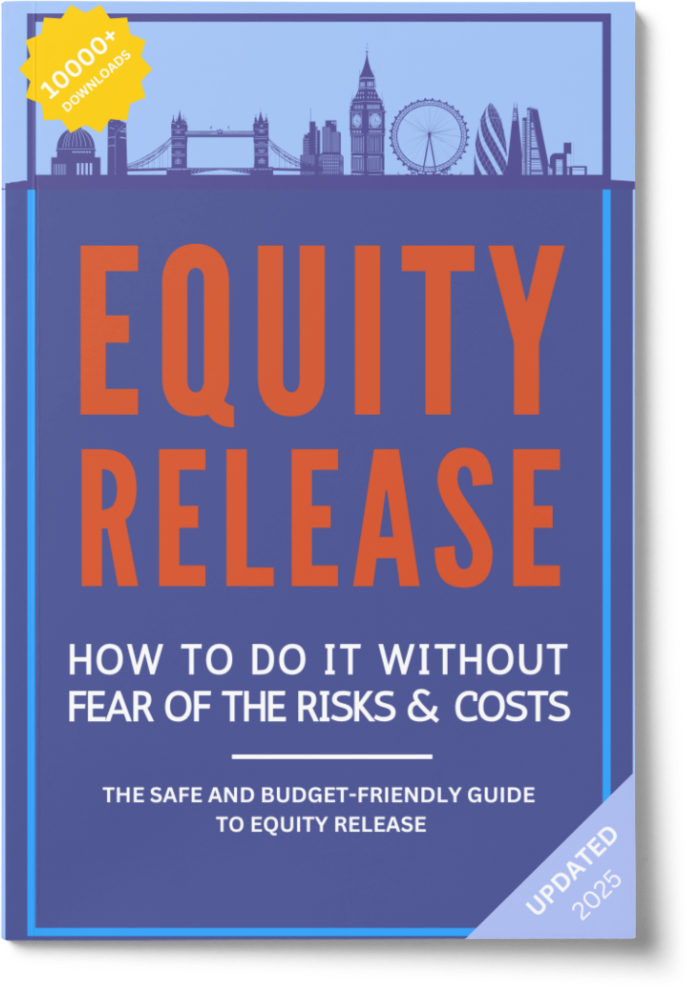How Does Equity Release Work in 2025?

SovereignBoss adheres to a stringent code of editorial guidelines, but some articles may feature partner references. Here is an explanation for how we make money.
In This Article, You Will Discover:
Last update: 06 March 2025
Scenario
- 60 Year Old Single Male
- £300k Property Value
- £30k Release
*This rate was accurate upon publication. While we review our figures regularly, they may have changed since this article was last updated.
Equity release continues to be a popular financial option for homeowners, especially those in later life looking to access the wealth tied up in their property. In 2025, equity release remains a vital solution for those seeking to boost their retirement income or cover the cost of care. This article breaks down how equity release works today, including the various types of products available, the benefits, risks, and considerations for homeowners.
What Is Equity Release?
Equity release allows homeowners, usually aged 55 and above, to unlock the value of their property while continuing to live in it. The main objective is to help people access the funds they need without the burden of having to sell their home. The money you release can be used for anything, whether that’s supplementing retirement income, paying for home improvements, or covering the costs of healthcare.
Types of Equity Release Products in 2025
In 2025, there are two main types of equity release products available to homeowners: lifetime mortgages and home reversion plans. Each has its own structure and set of benefits, so it's important to understand the difference before deciding which one is right for you.
1. Lifetime Mortgages
Lifetime mortgages are the most popular form of equity release in 2025. A lifetime mortgage allows you to borrow money against your home, which is repaid either when you move into permanent care or when the property is sold (usually after you pass away).
There are two types of lifetime mortgages:
- Drawdown Lifetime Mortgages: With this option, you can release an initial lump sum and then take additional sums of money as needed. This flexibility helps to ensure that you don’t pay interest on funds you don’t yet need.
- Lump Sum Lifetime Mortgages: This option allows you to take all of the funds upfront in one lump sum.
The loan is repaid with interest over time, but unlike traditional loans, there are no monthly repayments to make. The interest compounds and is paid when the loan is repaid after your death or move into long-term care.
2. Home Reversion Plans
Home reversion plans are another type of equity release available in 2025, though they are less common than lifetime mortgages. In a home reversion plan, you sell a portion or all of your home to a provider in exchange for either a lump sum or regular income. The provider then allows you to live in the home rent-free until you die or move into care.
The main advantage of a home reversion plan is that the amount you receive is often tax-free, but the downside is that you sell part of your home, which may reduce the inheritance you can leave behind.
How Does Equity Release Work in Practice?
The process of releasing equity from your home in 2025 follows several steps:
1. Speak with an Advisor
Before considering equity release, it’s important to speak with an independent financial advisor who is authorized by the Equity Release Council. Advisors will assess whether equity release is right for you and help you understand the full implications of releasing equity from your property.
2. Valuation of Your Property
Once you have made the decision to move forward, a professional valuation of your property will be conducted. The value of your home will play a major role in determining how much equity you can release.
3. Apply for the Product
Once the valuation is complete, you can choose the type of equity release product that best suits your needs. The provider will then present you with the terms and conditions of the agreement.
4. Receiving the Funds
After agreeing to the terms, you will receive the funds, either as a lump sum, in installments, or via a flexible drawdown arrangement. This can be used for any purpose, whether you want to pay off debts, make home improvements, or simply improve your lifestyle.
5. Repayment of the Loan
Repayment occurs when the homeowner dies or moves into permanent care. The loan, along with the accrued interest, is then repaid through the sale of the property. If there is any remaining value after the debt is settled, this will be passed to the homeowner’s estate.
Benefits of Equity Release in 2025
- No Monthly Repayments: Unlike traditional loans, there are no monthly repayments to make, which makes equity release an attractive option for retirees on fixed incomes.
- Flexibility: Products like drawdown lifetime mortgages allow homeowners to take funds as needed, helping to avoid paying interest on sums not yet used.
- Tax-Free Funds: The money you release from your home is typically tax-free, giving you more financial freedom.
- Stay in Your Home: You can continue living in your property for as long as you like, which is a key benefit for those looking to maintain their independence in retirement.
Risks and Considerations
While equity release offers many benefits, it also comes with risks that must be carefully considered:
- Reduced Inheritance: Since the loan is repaid through the sale of your home, there may be little or no equity left for your heirs.
- Compounding Interest: Interest on the loan compounds over time, meaning that the amount you owe can increase significantly, especially if you live for many years after releasing equity.
- Impact on Benefits: The money you release may affect your entitlement to state benefits or means-tested assistance, so it's important to seek advice before proceeding.
- Property Value Fluctuations: If property values decrease, it could affect the amount you can borrow and the value of your estate after the loan is repaid.
The Future of Equity Release in 2025 and Beyond
As we move further into 2025, equity release is expected to continue evolving in response to the needs of homeowners and the changing financial landscape. New products are likely to emerge, offering more flexible options, and digital platforms are making the application process smoother and faster.
Additionally, as more people live longer, there will likely be increased demand for equity release products that help fund long-term care or other retirement needs. Providers may offer more solutions that cater specifically to those looking for care funding or who wish to age in place.
Conclusion
In 2025, equity release continues to offer homeowners a flexible way to access the wealth tied up in their property without having to move out. Whether through lifetime mortgages or home reversion plans, homeowners can use equity release to help secure their financial future, fund their retirement, or pay for healthcare.
However, it’s important to carefully consider the implications, such as the potential reduction in inheritance and the impact of compounding interest. Always seek professional advice to ensure equity release is the right decision for your personal circumstances.
WAIT! Before You Start…
Equity Release Calculator
How Much Equity Can You Release?
Spotted a Mistake? Let us know here.




